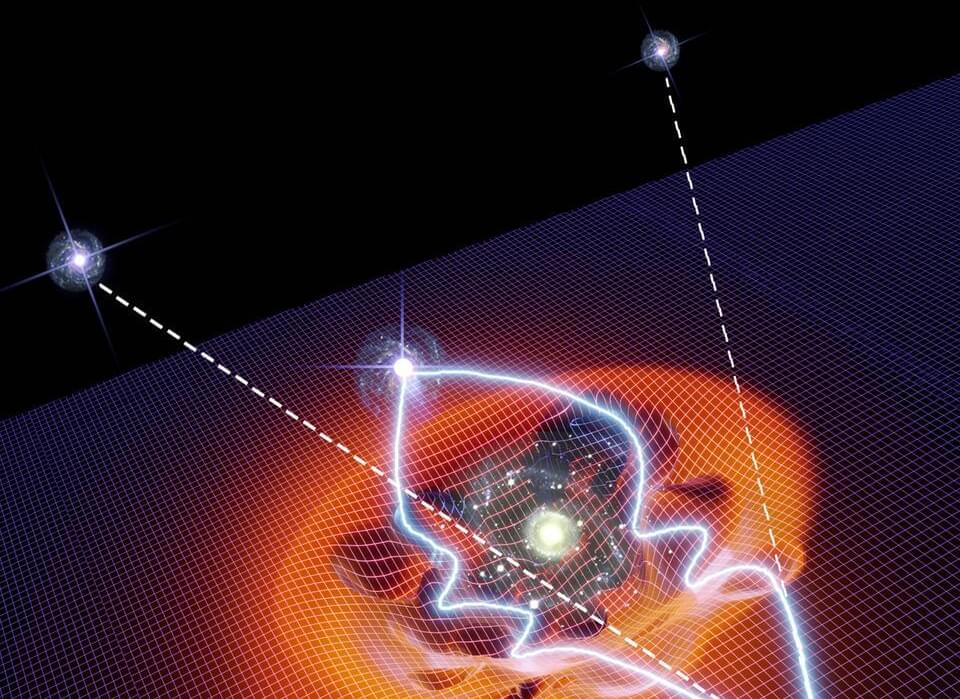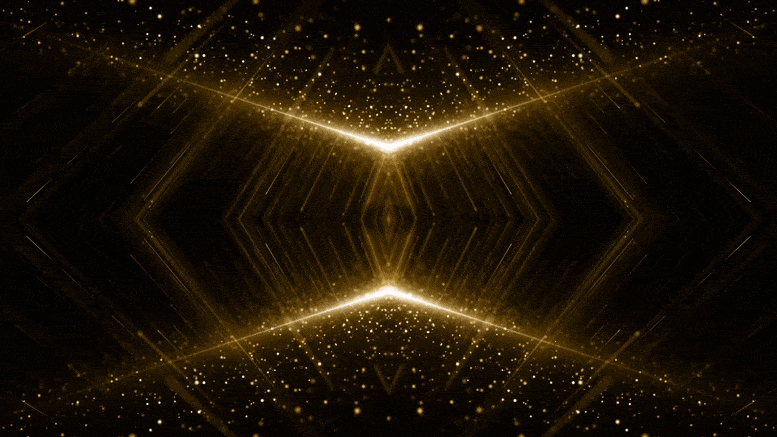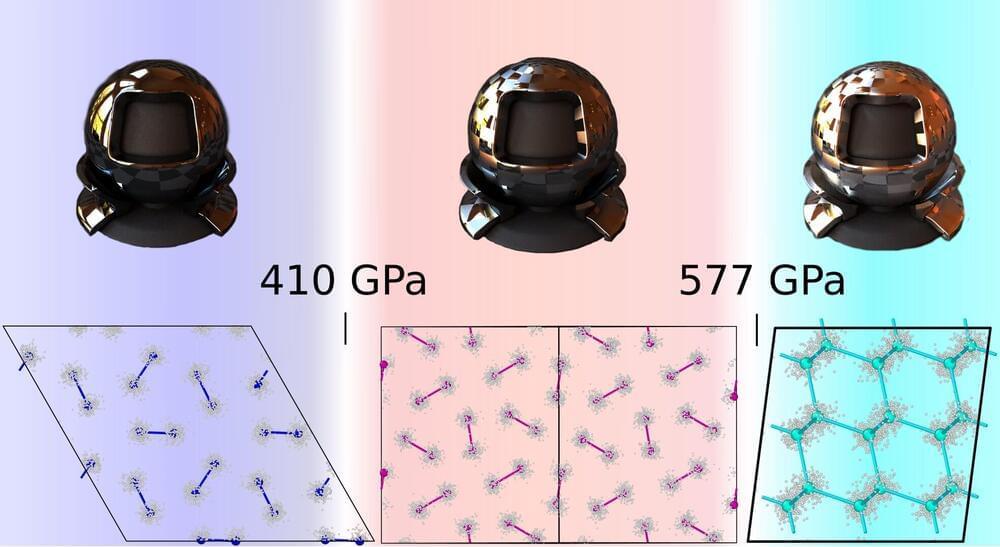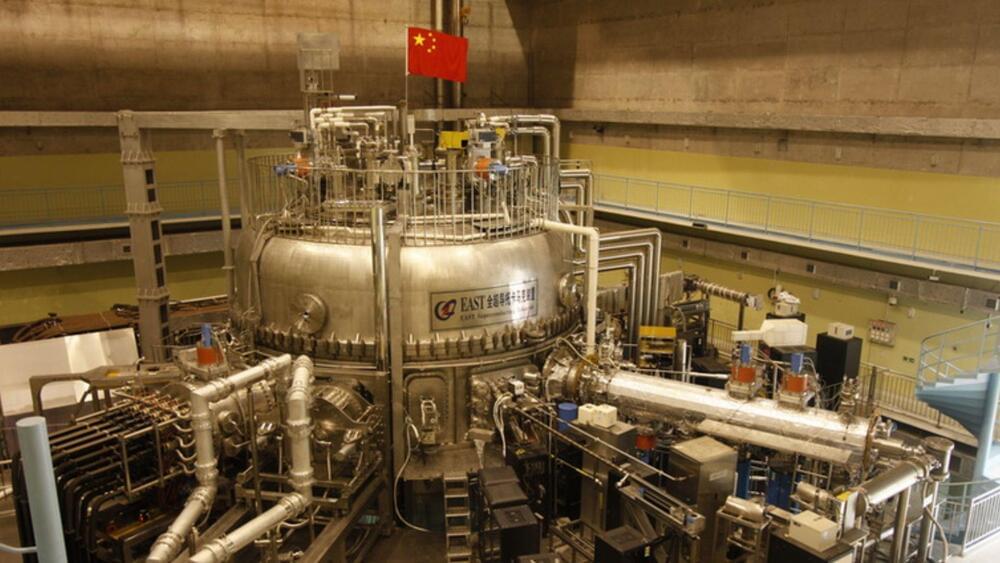ABSTRACT breaks down mind-bending scientific research, future tech, new discoveries, and major breakthroughs. Scientists have made an unprecedented discovery about dark matter by examining anomalies in…



After amazing us with its incredible strength, flexibility and thermal conductivity, graphene has now chalked up another remarkable property with its magnetoresistance. Researchers in Singapore and the UK have shown that, in near-pristine monolayer graphene, the room-temperature magnetoresistance can be orders of magnitude higher than in any other material. It could therefore provide both a platform for exploring exotic physics and potentially a tool for improving electronic devices.
\r \r.
Magnetoresistance is a change in electrical resistance on exposure to a magnetic field. In the classical regime, magnetoresistance arises because the magnetic field curves the trajectories of flowing charges by the Lorentz force. In traditional metals, in which conduction occurs almost solely through electron motion, magnetoresistance quickly saturates as the field increases because the deflection of the electrons creates a net potential difference across the material, which counteracts the Lorentz potential. The situation is different in semimetals such as bismuth and graphite, in which current is carried equally by electrons and positive holes. Opposite charges flowing in opposite directions end up being deflected the same way by the magnetic field, so no net potential difference is generated and the magnetoresistance can theoretically grow indefinitely.

Physicists have recreated the double-slit experiment in time rather than space, using materials that change their optical properties in femtoseconds. This research could lead to ultrafast optical switches and advancements in time crystals and metamaterials.
Metamaterials are engineered materials that have properties not usually found in nature.
PBS Member Stations rely on viewers like you. To support your local station, go to: http://to.pbs.org/DonateSPACE
↓ More info below ↓
Sign Up on Patreon to get access to the Space Time Discord!
https://www.patreon.com/pbsspacetime.
Physicists have a long history of sticking our noses where they don’t belong — and one of our favorite places to step beyond our expertise is the question of consciousness and free will. Sometimes our musings are insightful, sometimes incoherent, and usually at least somewhat naive. Which a fair description of this show, so of course Space Time needs to weigh in physics and free will…
Check out the Space Time Merch Store.
https://pbsspacetime.com/
Sign up for the mailing list to get episode notifications and hear special announcements!
https://mailchi.mp/1a6eb8f2717d/spacetime.
Hosted by Matt O’Dowd.

Physicists and material scientists have been trying to metallize hydrogen for many decades, but they have not yet succeeded. In 1968, British physicist Neil Ashcroft predicted that atomic metallic hydrogen would be a high-temperature semiconductor.
Most recent studies also suggested that this elusive and hypothetical form of hydrogen would also conduct electricity with no resistance when its temperature exceeds that of boiling water. This prediction ultimately paved the way for the discovery of high-temperature superconductivity in hydrides (i.e., compounds containing hydrogen and a metal).
Researchers at Sapienza University of Rome, Sorbonne University, CNRS, and the International School for Advanced Studies (SISSA) have recently carried out a study aimed at thoroughly characterizing the behavior and properties of hydrogen at high pressures. Their paper, published in Nature Physics, outlines a highly accurate phase diagram of high-pressure hydrogen, which could inform ongoing efforts aimed at creating atomic metallic hydrogen.
What does it mean to ask about the end of the universe? Can the universe even have an end? What would end? In the far, far future, what happens to stars, galaxies, and black holes? What about mass and energy, even space and time? What’s the ‘Big Crunch’ and the ‘Big Rip’? And what if there are multiple universes, will the multiverse ever end?
Free access to Closer to Truth’s library of 5,000 videos: http://bit.ly/376lkKN
Watch more interviews on the end of the universe: https://bit.ly/3MSHlFF
Support the show with Closer To Truth merchandise: https://bit.ly/3P2ogje.
Fred Adams is a professor of physics at the University of Michigan. His work is in the general area of theoretical astrophysics with a focus on the study of star formation and cosmology.
Register for free at CTT.com for subscriber-only exclusives: https://bit.ly/3He94Ns.

Its demonstration nuclear power plant is expected to be ready by 2035.
The Experimental Advanced Superconducting Tokamak (EAST), popularly known as China’s “artificial sun”, set a new record on Wednesday by running for 403 seconds in a steady-state high-confinement long plasma operation, Chinese news outlet CGTN
Moving closer to nuclear fusion energy.
Institute of Plasma Physics.
The recent run of the reactor broke the previous record run of 101 seconds which was achieved in May 2021. The experiment which was completed after the researchers made 120,000 attempts will be a critical data point for the operation of the International Thermonuclear Experimental Reactor (ITER), of which China is also a member.

In the early 1900s, Albert Einstein proposed the theory of general relativity, which challenged everything scientists believed they understood about the universe at the time. Over the years, scientists have questioned whether this theory was true. However, a newly created dark matter map finally gives undeniable proof.
We must first look at Einstein’s original theory to fully understand this new development. Before Einstein proposed the theory of general relativity, scientists believed space to be almost featureless and changeless. Further, they thought that time flowed at its own pace, oblivious to clocks that tried to measure it, as Isaac Newton had suggested two centuries earlier.
However, Einstein proposed that both space and time were one force, spacetime, and that matter within this ever-changing stage was controlled by the curving path that gravity dictated. But to create gravity, we needed mass, a force so strong it could literally curve spacetime around it. This is where dark matter comes into play.

— What’s the biggest black hole in the universe?
LISA will consist of a trio of satellites orbiting the sun that will constantly monitor the distances among them. When a gravitational wave comes by, the satellites will detect the telltale signature, like buoys in the ocean recognizing a passing tidal wave.
To search for IMBHs, the astronomers have to hope for a lucky break. If an IMBH in the galactic center happens to capture a wandering dense remnant (like a smaller black hole, a neutron star, or a white dwarf), the process will emit gravitational waves that LISA can potentially detect. Because the IMBH itself will be orbiting around the central supermassive black hole, these gravitational waves will undergo a Doppler shift (like the shifting in frequencies from a passing ambulance) due to the IMBH’s motion.

Some mysteries in science vanish with more accurate measurements, resolving gaps with a puff of new data. And sometimes, a second look simply reinforces the fact you have a mystery on your hands.
It’s the latter in the case of a new study that challenges the Universe’s most fundamental laws of physics.
The Hubble constant is an expression of the speed of Universe’s expansion. Unfortunately, there’s more than one solution for it, depending on how it’s measured.